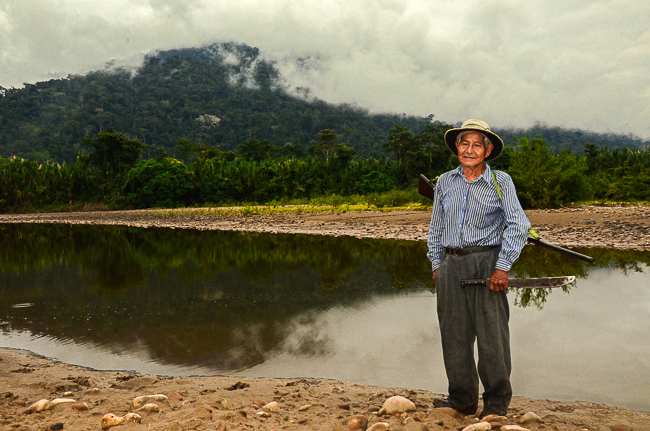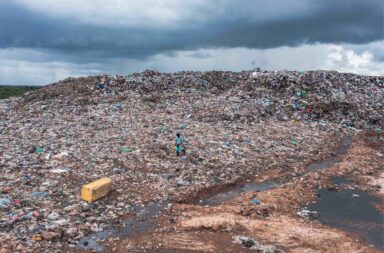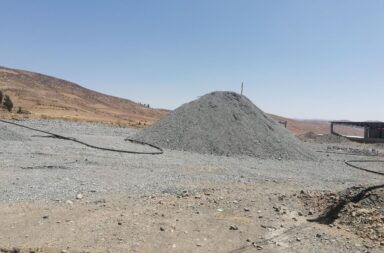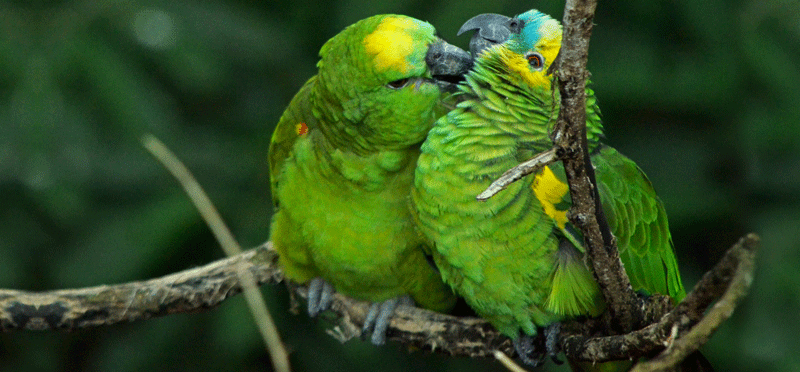

Territories in the municipalities of Guanay and Teoponte, north of the Department of La Paz, untie clashes between groups of community members and miners. As this occurs, the waters of the Bolivian Amazon are being affected by the excessive dumping of mercury.
By Eduardo Franco Berton / RAI
• Is urgent to conduct a study on the state of mercury contamination of water sources in the Bolivian Amazon, experts say.
•According to the latest Global Mercury Assessment report published in 2013, 55 tons of mercury was spilled in the water and soils of Bolivia in 2012.
• Experts say that the Mining Law No. 535 of Bolivia, promulgated on May 28, 2014, encourages the taking and illegal possession of land for mining purposes.
15 years ago, Pedro Espinoza, former miner, decided to leave behind the gold mining activity and move to live in the middle of a forest in the area of Yiquimuni, along the Kaka River, located north of the department of La Paz. This happened during the year 2001, Pedro was 60 years old then, he came with big hopes for his new life in harmony with the forest, away from the dredges, bossy bosses and especially mercury. His plan was to raise chickens, some cows and plant fruit trees as subsistence.
─ How was the gold mining activity on those years?
─I started working in gold mining in 1980; previously I worked in the mines of the municipality of Tipuani. Back then the operation was rustic, first we worked with cuadros (mining in a portion of the river). Then in 1982 we began working with mechanization (backhoe loaders and vibrators). Now they are using the mercury to recover the gold dust.
─ And what do they do with the used mercury?
Unfortunately, it is thrown into the water and is harmful to the environment.
The former miner did not imagine he was going to deal with the same problem in his new home.
─ And how is this affecting the area?
─ In the past, during this time, this River (Kaka) had a lot of fish. Not now. I have my tights and I’m not getting anything. Before, I used to get catfish, surubí and sabalos fish from this river.
The global economic crisis of 2008 led to a new rush for gold mining in the Amazon countries. This caused an international rise in gold prices, a growth in the global demand, and increased mining in the Bolivian Amazon.
Mercury: an enemy that needs to be studied
Mercury is used to increase gold recovery, it binds to heavy metal and enables the collection of small gold particles from water. When the mercury -used in the process- is poured into water, a highly toxic compound is form: methyl mercury that is absorbed by fish stocks.
When humans consume fish or other foods contaminated with methyl mercury this readily enters the bloodstream and passes quickly to other parts of the body (about 95% is absorbed). If this methyl mercury enters the blood of a pregnant woman it will move easily to the developing child’s blood and from there to the brain and other tissues, causing damage to the nervous system of the fetus.
According to the latest Global Mercury Assessment report published in 2013 and prepared for the United Nations Environment Programme (PNUMA), 55 tons of mercury was spilled in the water and soils from Bolivia in 2012. This report itself defined mercury as “a global threat to human and environmental health.”
UNEP also claims that Bolivia would have issued and spilled around 100 tons per year of environmentally pollutant mercury, of a global total of 1,707 tons in 2010 and 1,607 in 2011. This means that Bolivia is responsible for issuing the 6% of all the anthropogenically mercury dispensed to the environment due to gold mining.
Ricardo Calla Ortega, sociologist and Bolivian anthropologist, said in a publication for the Center of Labor and Agrarian Development Studies (CEDLA) that a named reference on the environmental impacts of mercury in the Bolivian Amazon was conducted in 1992 by the doctorate in chemistry P. Justo Zapata and a multidisciplinary team of 13 specialists. This study was made in the region of Nueva Esperanza, Araras, in the Department of Pando.
The study concluded then that: “… the mercurial pollution is affecting the fish population and probably also to the human population that feeds on fish […] specifically, the flesh of fish for human consumption should be less than 200 particles per billion (ppb) of mercury (according to World Health Organization standards), […] this values are below the average of 575 ppb and 799 ppb obtained in the two seasons (dry and rainy) of the study.”
The study also marks, that much higher mercury values were found “in the Pacú (Colossoma macropomun) and catfish (Pseudoplastystoma fasciatum), collected in the municipality of Trinidad, on the Mamore River, in the Department of Beni, with 2,185 and 2,109 ppb respectively. ” No other in-depth research has been done since then on gold and mercury in any of the areas of the Bolivian Amazon. “The hypothesis is that fish contamination in this region could have worsened following the latest international boom in gold prices, and a serious investigation is urgent,” said Calla Ortega.
Mining threat to the Pilon Lajas Biosphere Reserve
We left Yiquimuni behind. Now we sail through the Kaka River and approach to the waters of the Beni River. In Bolivia the so-called “golden route” stretches for about 350 kilometers, it begins in the Yungas region and extends to the municipalities of Tipuani, Guanay and Teoponte in the Department of La Paz. We finally arrived to the ´´El Beu´´ canyon, “we are in the territory of the Pilon Lajas Biosphere Reserve “, says Hermindo Vies, who was then one of the park rangers of this nature reserve.
Hermindo Vies belongs to the Tsimane indigenous group, his nickname in the Asuncion del Quiquibey community is “Mindo”. Asuncion is an indigenous community of the Tsimane indigenous group found in the Pilon Lajas Biosphere Reserve along the Quiquibey River. When Mindo was a child his parents thought him to respect and value nature, this became one of his motivations to become a park ranger. “Being a park ranger is not easy, sometimes during park patrols we face risky situations, such as meetings with armed illegal hunters and loggers´´, said Vies.
We continue navigating when we suddenly saw two boats and a motor in the river shore. ´´! Be careful, they look like illegal miners!” shouts Hermindo to us. At the other end of the boat Gabriel Buchapi who is the head of the park rangers recommends that we wait a while before descending from the boat. “You never know who can come in front of you´´ alerts. Suddenly a nervous man approaches towards us, while another man awaits a few meters next to a woman and a child.
─We are inside the territory of the Pilon Lajas Biosphere Reserve, a protected area of Bolivia. You cannot search for gold here ─says Gabriel Buchapi to the miners.
─ We have the right to work! The other community members are searching for gold above the river, that’s why we came here, if we need to get a permit we will ask for one ─replies the miner.
─! They will not give you one! This is a protected area, it is also the strict protection zone of the Pilon Lajas reserve. Also, in front of us is the Madidi National Park, another protected area. You are committing an infraction. Why don’t you leave and search for gold elsewhere? ─ responds Buchapi somewhat annoying.
─Okay, we will leave ─says the miner with no interest on continuing with the discussion.
Meanwhile, Roman Micho, another park ranger who is accompanying us, writes down the name of the miners on his notebook in order to file an infringement to the Protected Areas General Regulations.
Henry Apuri and the defense of his territory
Henry Apuri belongs to the Leco indigenous group, one the 36th indigenous ethnic groups recognized by the Political Constitution from Bolivia. He calls himself as “the Indian sky walker”. His last days had not been the best, now Henry and his family are faced with the Union Teoponte Gold Cooperative, which operates in the municipality of Teoponte in La Paz.
“Before the Cooperatives was digging holes 400 meters above the riverbank and did not affect me, but now they are just 20 meters from my house, they are between 50 to 60 people that had remove trees and opened a huge crater behind my property. They way of working is based on the intimidation of people. This cooperative has no legal documents or environmental permits and continues to operate illegally, “says Apuri, who fears a confrontation.
According to the Regional Federation of Auriferous Mining Cooperatives (FERRECO), there are 1,700 mining cooperatives in Bolivia, of which 65%, about 1,100 are engaged in gold mining. The remaining 35% are extracting other minerals like tin, wolfram, silver, lead and antimony in the regions of Potosi, Oruro and Cochabamba. From the 1,100 cooperatives engaged in gold mining, 91 percent operates in the municipalities of northern department of La Paz. This department is the leading producer of gold in the country bordering an annual income of $ 5.1 million according to the National Information Service about Mining Exports (SENACOM). On the year 2014 the domestic production set a record, reaching 34 tons, according to the National Service for Registration and Control of Marketing of Minerals and Metals (Senarecom).
In the case study “the illegal routes of gold” the Peruvian Society for Environmental Law (which analyzes five cases in the Amazon) determined that the new Mining Law No. 535 from Bolivia, promulgated on May 28, 2014, although defines exploitation and illegal marketing of mineral resources when is “effected, without the authorization or granted right […]” – activities subject to penalties including arrest, seizure and / or destruction of the machinery used, and initiating actions of criminal proceedings-, there are other provisions in this law that encourages the taking and illegal possession of land for mining purposes.
This is seen in Article 128 of the law, where among the requirements for getting a prospecting and exploration license is having a legal status or only the certificate of the procedure of this.
“Is it a crime to defend the flora and fauna? Is it a crime to want to return to the land of your birth? Apparently yes, it is a crime for those who see your return as a threat and impediment to quench their thirst for ambition, “says Mabel Poma, wife of Henry Apuri, while indicating that her husband has become an obstacle for gold miners in Teoponte.
Shortly after producing this report I received a call telling me that the property of Pedro Espinoza in Yiquimuni was overwhelmed by miners who entered his territory with heavy machinery and started clearing the forests he was been watching for the last 15 years.
Now Pedro feels a moral pain, anger and frustration for the effects caused by the gold rush in Bolivia.



